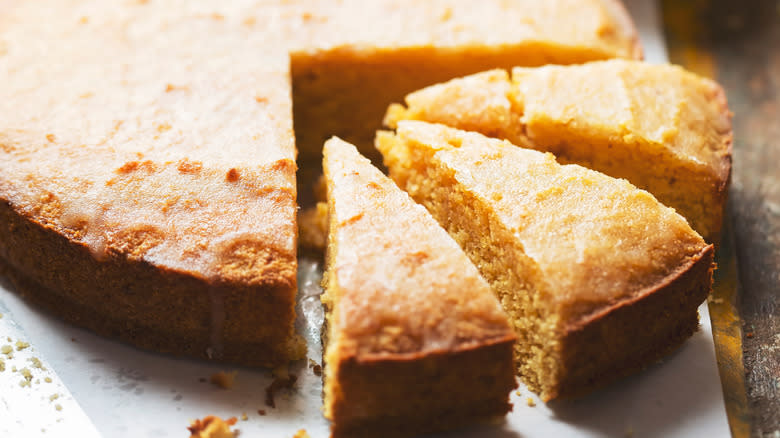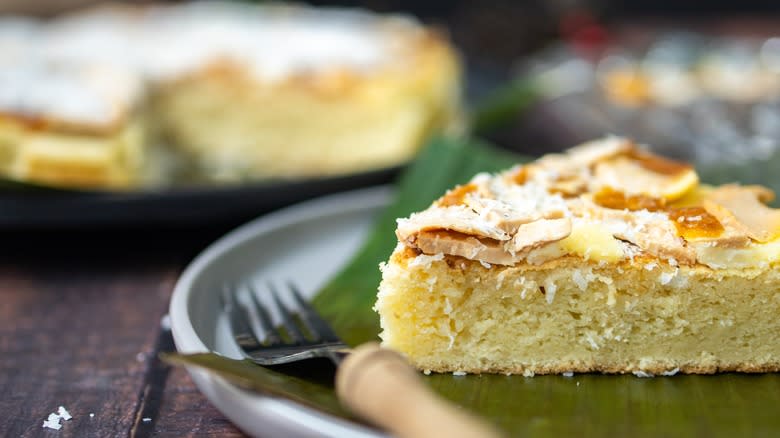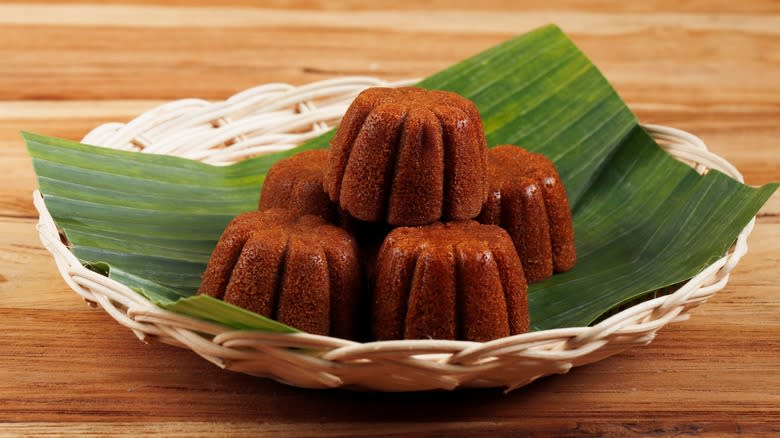Banana Leaves Are An Underrated Trick For Super Moist Cake

A cake may have the perfect flavor, but if its texture is too dry, it just won't be as satisfying to eat. It's possible to add moisture back into a cake after baking by soaking or drizzling it with simple syrup. But while this common approach is certainly effective, there's an even better way to go about it that can both prevent dryness and make an already moist cake recipe even more moist. Instead of lining your cake pan with parchment paper or the simple paste known as "cake goop," the key is to opt for banana leaves.
Banana leaves, as their name suggests, come from the banana plant. Unlike the fruit, they aren't edible, though they're commonly used in Asian, Caribbean, and Hispanic cuisines as a surface to cook, serve, and wrap food, essentially functioning as an all-natural aluminum foil. In Filipino cooking, banana leaves are used to line the pan when making bibingka, a traditional coconut-flavored cake. However, no matter the flavor of the cake, banana leaves can give it a moist texture.
Read more: Cake Hacks Every Baker Will Wish They Knew Sooner
How Banana Leaves Add Moisture To Cakes

When banana leaves are used for cooking, they aren't dried out beforehand and still contain a lot of their own natural moisture. In fact, before using, they're usually soaked in boiling water in order to make them more flexible. As a result, when you bake a cake in them, some of that water will inevitably turn into steam, leaving you with an extra moist cake. This can't occur with parchment paper since it doesn't contain its own moisture, which is precisely why banana leaves yield such different results. In bibingka for example, without the banana leaves, the edges crisp up more instead of staying soft since the moisture doesn't get locked in.
When baking with banana leaves, you'll want to keep in mind that they are permeable, so batter could easily leak to the bottom of the pan. Therefore, for best results, make sure to overlap layers of banana leaves to prevent this from happening. Banana leaves can also be fragile, so handle them with care when you lay them in the pan.
Another Benefit To Baking Cakes With Banana Leaves

In addition to adding moisture to cakes, banana leaves also contribute a unique flavor. Since they come from the same plant as bananas, you might assume they would taste similar to the fruit, but that's not the case at all. The flavor is actually floral with earthy, sweet undertones, and when banana leaves char in the oven, they can also give baked goods a mild smoky taste. If you want to infuse your cake with a little extra flavor without mixing in more ingredients to the batter, you can't go wrong with banana leaves.
Unfortunately, you won't be able to easily find banana leaves at most supermarkets, however they are available online and at Asian and Latin groceries either in the freezer section or alongside other refrigerated wraps. A single pack often contains multiple banana leaves ensuring you have an ample supply on hand whenever you need to add more moisture and flavor to your cakes.
Read the original article on Daily Meal.

